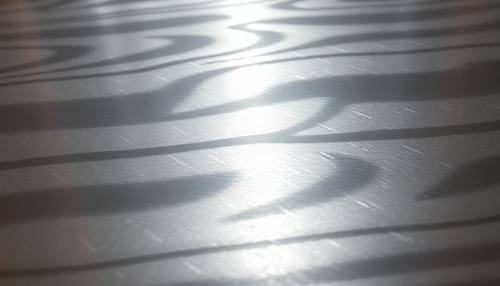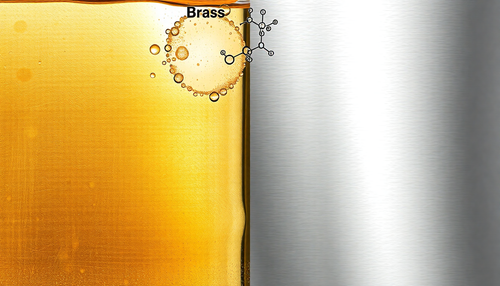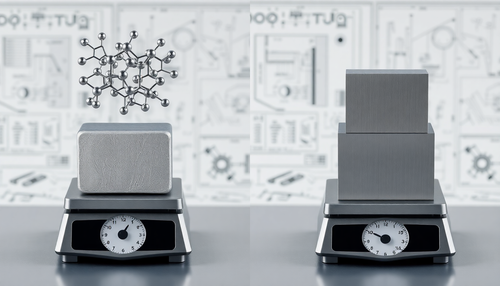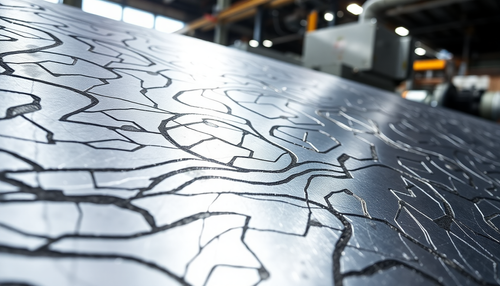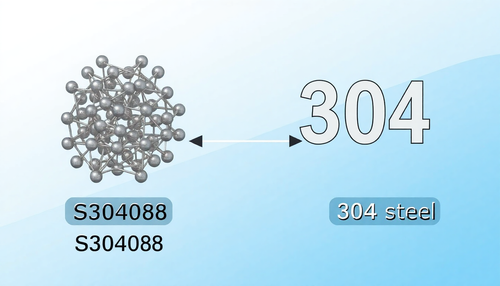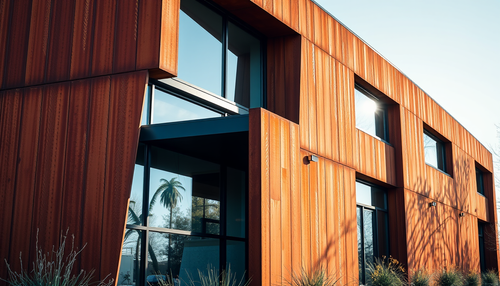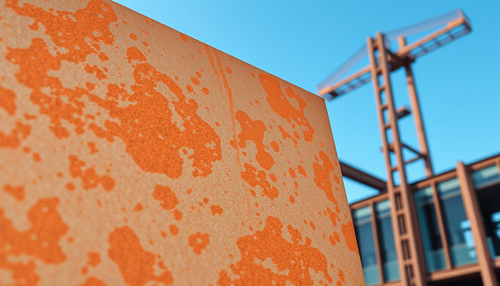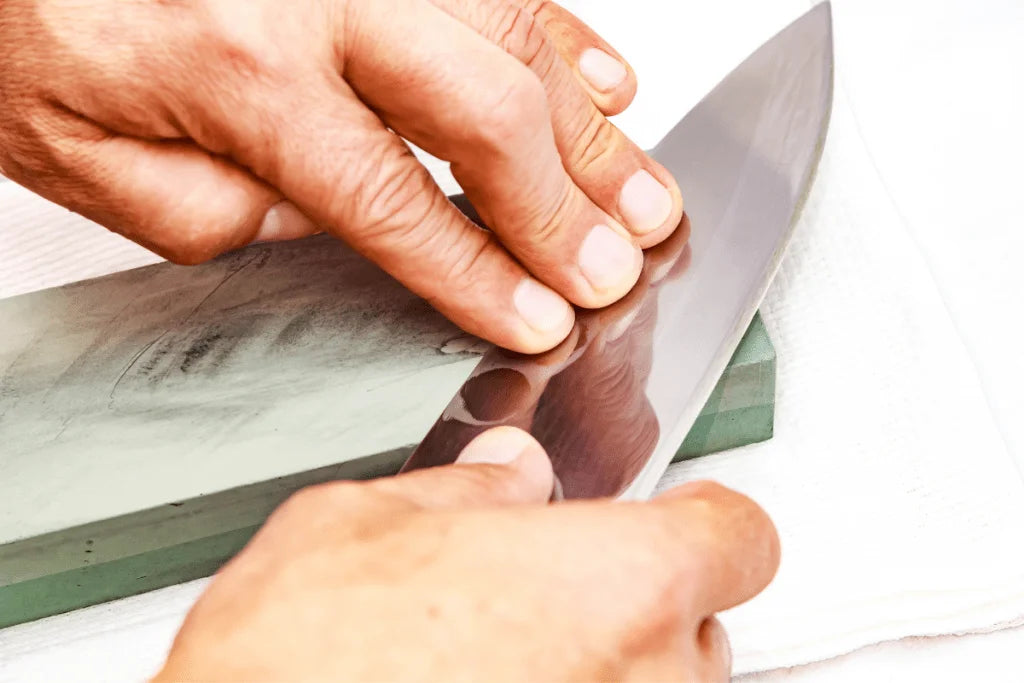
STEEL FOR KNIFE MAKING
The choice of steel is one of the most critical factors in the manufacture of steel knives. The quality of the steel not only determines the durability and strength of the knife, but also influences its ability to maintain a sharp edge and its resistance to corrosion. In this detailed guide, we will explore the importance of selecting the right steel, the different types of steel available, and the essential chemical compounds that affect its properties.
1. Importance of choosing Steel: Steel selection is one of the most critical aspects in manufacturing high quality knives. The quality of the steel determines not only the strength and durability of the knife, but also its ability to maintain a sharp edge and resist corrosion over time. An inappropriate choice of steel can result in a knife that does not meet the user's expectations in terms of performance and durability.
2. Common Steel Types: There are several types of steel commonly used in knife making, each with its own unique characteristics. Two of the most popular types are carbon steel and stainless steel.
3. Carbon Steel: Carbon steel is known for its high hardness and ability to maintain a sharp edge for long periods. This is partly due to the carbon content present in steel. Carbon adds hardness to steel, making it suitable for use in knives that require high strength and durability. However, carbon steel is susceptible to corrosion and requires extra care to prevent rust from forming.
4. Stainless Steel: Stainless steel is valued for its resistance to corrosion, making it ideal for kitchen and outdoor knives. Chromium is one of the main chemical compounds present in stainless steel and is responsible for its resistance to corrosion. Chromium forms an oxide layer on the surface of the steel, known as a "passive film", which protects the steel against oxidation and corrosion.
5. Chemical Composition: The chemical composition of steel is one of the most important factors to consider when selecting the appropriate steel for making knives. In addition to carbon and chromium, other chemical compounds such as molybdenum, vanadium and manganese also play an important role in determining the properties of steel.
- Carbon (C): Carbon is one of the main alloying elements in steel and plays a crucial role in determining its hardness. The amount of carbon present in steel directly affects its ability to maintain a sharp edge and its resistance to wear.
- Chromium (Cr): Chromium is an essential alloying element in stainless steel and is responsible for its resistance to corrosion. The higher the chromium content in steel, the greater its resistance to corrosion.
- Molybdenum (Mo): Molybdenum is often added to steel to increase its resistance to corrosion and abrasion. Molybdenum forms molybdenum carbides dispersed in steel, which improves its hardness and wear resistance.
- Vanadium (V): Vanadium is another common alloying element in high-quality steels. Vanadium forms vanadium carbides dispersed in steel, which increases its hardness, wear resistance and edge retention.
Popular Steel Types for Knife Making
- Stainless Steel (such as 440C, VG10): Provides corrosion resistance and is easy to maintain. 440C is known for good corrosion resistance and edge retention, while VG10 is valued for its edge retention and ease of sharpening.
- Carbon Steel (such as 1095, O1): Provides excellent edge retention and is easy to sharpen. 1095 is a simple and popular steel, while O1 is prized for its ease of heat treatment and ability to obtain an extremely sharp edge.
- Damascus Steel (varied patterns): Made through a forging process that combines multiple layers of different steels, resulting in a unique appearance and combination of characteristics from different steels.
- VG10 Steel: Known for its excellent edge retention and corrosion resistance, it is commonly used in high-end knives, especially Japanese kitchen knives.
- D2 Steel: Recognized for its high wear resistance and good edge retention. It is often used in heavy-duty knives.
- S30V Steel: It has an excellent combination of corrosion resistance, toughness and edge retention, making it suitable for a variety of applications.
- S35VN Steel: An evolution of S30V, it offers improvements in ease of machining and wear resistance while maintaining corrosion resistance and edge retention.
- CPM-154 Steel: Known for its excellent corrosion resistance, toughness and ease of sharpening. It is widely used in high-end knives.
- M390 Steel: Valued for its exceptional edge retention and corrosion resistance, it is often used in high-performance knives.
- AUS-8 Steel: Offers a good combination of corrosion resistance, toughness and ease of sharpening, making it a popular choice in general purpose knives.
6. Factors to Consider When Choosing Steel: When selecting steel to make knives, there are several factors to consider, including the intended use of the knife, the environment in which it will be used, and the user's preferences.
- Intended use: The type of steel chosen must be suitable for the intended use of the knife. For example, kitchen knives may require stainless steel due to its corrosion resistance, while survival knives may require carbon steel due to its high hardness.
- Use environment: The environment in which the knife will be used should also be considered when selecting the steel. For example, in humid or saline environments, it is important to choose a steel with high corrosion resistance.
- User Preferences: User preferences, such as ease of sharpening and appearance of the knife, should also be considered when selecting steel.
7. Durability and Resistance: For knives subject to heavy use, such as survival knives or hunting knives, it is essential to choose a steel that offers high durability and resistance to wear.
8. Ease of Sharpening: For users who value the ability to maintain a sharp edge, it is important to select a steel that is easy to sharpen and will maintain sharpness for extended periods.
9. Maintenance and Corrosion Resistance: In humid or saline environments, such as kitchens or outdoor activities, corrosion resistance is crucial. Choose stainless steel with a high chromium content to ensure a long knife life.
HEAT TREATMENT
Heat treatment is a crucial process in steel knife manufacturing, which involves the controlled heating and cooling of the material to change its physical and mechanical properties. This process consists of two main stages: quenching and tempering.
Definition: Heat treatment is a technique used to improve the mechanical properties of steel, such as hardness, strength and toughness, through controlled changes in its crystalline structure.
Purpose: The main purpose of heat treatment is to adjust the properties of the steel to make it suitable for its specific application. This may include increasing hardness to improve cutting and drilling ability, or increasing toughness to prevent breakage under load.
- Main steps:
- Quenching: During quenching, steel is heated to a temperature above its critical temperature and then rapidly cooled in a cooling medium such as water, oil, or air. This promotes a transformation in the crystalline structure of the steel, resulting in an increase in hardness.
- Tempering: After quenching, steel can become excessively hard and brittle. Tempering is the process of reheating steel to a temperature below the critical temperature, followed by controlled cooling. This reduces excessive hardness while improving the toughness and impact resistance of the material.
The importance of heat treatment in the manufacture of steel knives:
Heat treatment is essential in the manufacture of steel knives due to its direct influence on the mechanical properties of the material. Here are some key points that highlight the importance of heat treatment:
- Hardness: Quenching increases the hardness of steel, making it capable of maintaining a sharp edge longer and resisting wear and tear during use.
- Toughness: Tempering after quenching improves the toughness of the steel, making it less susceptible to breaking under load or impact, which is essential to ensure the durability and safety of the knives.
- Strength: Heat treatment can significantly increase the strength of steel, making it capable of withstanding heavier loads without permanent deformation or failure.
- Property Control: Heat treatment offers knife manufacturers the ability to control and adjust the properties of steel according to the specific needs of the user and the environment of use, ensuring that each knife meets desired performance standards.
Heat treatment is an essential process in the manufacture of steel knives, as it allows manufacturers to adjust the mechanical properties of the material to meet the performance, durability and safety demands of users.
TEMPERING
Tempering is the second stage of heat treatment and follows quenching. In this phase, the steel is reheated to a temperature below the critical temperature and then cooled in a controlled manner. This step is essential to adjust the properties of the steel and ensure that it meets the specific requirements of an application.
- Reheating the steel: After quenching, the steel is heated again, usually in a furnace, to a temperature that is below the critical temperature of the material. This temperature is determined based on the desired properties of the steel and the application of the knife.
- Controlled cooling: After reheating, the steel is cooled in a controlled manner. Cooling can be done in ambient air or in a temperature-controlled oven. The cooling rate and final temperature are adjusted to achieve the desired properties in the steel.
Details about the tempering objectives:
Tempering has several important objectives, all of which are related to adjusting the properties of the steel to optimize its performance:
- Reduction of excessive hardness: After quenching, steel can become excessively hard and brittle. Tempering reduces this excessive hardness, making the steel more tenacious and less likely to break under impact.
- Improved toughness: Tempering promotes a redistribution of internal stresses in the steel, which improves its toughness. This makes the steel more resistant to fracture failure and allows it to absorb impact energy without breaking.
- Increased impact resistance: By improving toughness, tempering also increases the steel's ability to resist sudden impacts and dynamic loads. This is particularly important in knives, where the steel can be subjected to impacts during use.
Discussion on the importance of tempering in preventing the brittleness of steel resulting from quenching:
After quenching, steel can become excessively hard and brittle due to the rapid rate of cooling. Tempering is essential to relieve these internal stresses and reduce the brittleness of the steel. Without proper tempering, the steel can become prone to cracking and failure, compromising the integrity and safety of the knife.
Therefore, tempering plays a crucial role in preventing the brittleness of steel resulting from quenching, ensuring that knives have the ideal mechanical properties to withstand the rigors of actual use, whilst maintaining their durability and longevity.
PRECISE PROCESS CONTROL
Precise control of temperature and heating and cooling times is absolutely essential during heat treatment in the manufacture of steel knives. Here are the reasons why this control is crucial:
- Impact on steel properties: Small variations in temperature during heating and cooling can result in significant differences in the final properties of the steel. Precise control guarantees consistent and predictable results.
- Prevents defects in the material: Excessively high or low temperatures, or inadequate exposure times, can lead to defects in the material, such as cracks, distortions or tempering failures. Careful control minimizes the risk of these problems.
- Optimization of properties: Precise control allows you to adjust heat treatment conditions to optimize the properties of the steel for the desired application. This may include adjustments to hardness, toughness and impact resistance.
Discussion on the use of high-quality equipment and the importance of rigorous process monitoring:
- High-quality equipment: The use of high-quality quenching and tempering furnaces is essential to ensure effective and consistent heat treatment. Inadequate equipment can result in variations in temperature and treatment times, compromising the quality of the knives.
- Strict process monitoring: Constant monitoring of heat treatment conditions is essential to ensure the process is proceeding as planned. This may involve the use of temperature sensors and automated control systems to ensure treatment accuracy and consistency.
- Quality tests: In addition to monitoring during the heat treatment process, it is important to carry out quality tests on the finished product to verify that the steel properties meet the desired standards. This may include testing for hardness, microstructure and impact resistance.
In short, precise control of temperature and heating and cooling times, together with the use of high-quality equipment and rigorous process monitoring, are fundamental to ensuring the consistency and quality of heat treatment in the manufacture of steel knives. . These aspects ensure that the knives have the ideal mechanical properties for their intended use, resulting in high quality and performance products.
EFFECTS OF TEMPERING AND TEMPERING
Quenching and tempering are crucial steps in the heat treatment of steel, each contributing significantly to adjusting its mechanical properties. Let's detail the effects of each of these steps:
1. Effects of Tempering:
- Hardness: Quenching significantly increases the hardness of steel, making it capable of maintaining a sharp edge for a long period of time. This is due to the rapid rate of cooling during quenching, which promotes the formation of a more rigid crystalline structure.
- Toughness: Although quenching increases the hardness of steel, it can result in a decrease in toughness, making the material more likely to break under impact loads. This occurs due to the formation of hardened microstructures that are less capable of absorbing impact energy.
- Impact resistance: The impact resistance of steel can be affected by tempering. Although hardness increases, toughness may decrease, making the steel more susceptible to fracture under impact load.
2. Tempering Effects:
- Hardness: Tempering reduces excessive hardness resulting from quenching, making the steel more malleable. This occurs due to the reheating of the steel at a controlled temperature, which allows for a redistribution of internal stresses.
- Toughness: The main effect of tempering is to increase the toughness of the steel. Reheating followed by controlled cooling promotes the relaxation of internal tensions and the formation of a more resilient structure, making the material less susceptible to fractures.
- Impact resistance: Tempering significantly improves the impact resistance of steel, making it better able to absorb impact energy without breaking. This is essential for applications where the steel may be subject to shock loads, such as kitchen knives or general purpose knives.
Practical examples:
- Kitchen Knives: A kitchen knife should have an ideal combination of hardness and toughness. A properly tempered steel will have a sharp edge that remains for a long time, while tempering will ensure that the knife is resilient enough to handle heavy cuts without breaking.
- Hunting knives: For hunting knives, it is important to have a hardness enough to keep the edge sharp during use, but also a toughness high enough to handle heavy work and withstand impacts such as cutting bone.
- Survival knives: Survival knives need to be extremely tough and durable. Carefully controlled heat treatment can ensure these knives have an ideal combination of hardness and toughness to withstand extreme conditions and intensive use.
Quenching and tempering have significant effects on the final properties of steel, affecting its hardness, toughness and impact resistance. Careful control of these steps is critical to ensuring that steel knives have the ideal mechanical properties for their specific application.
VARIATIONS IN HEAT TREATMENT
Steel knife manufacturing involves a variety of heat treatment methods, each tailored to meet the specific needs of the material and desired applications. Let's discuss some of the variations in quenching and tempering methods, as well as how these variations can be adjusted to optimize steel properties for different applications:
1. Quenching methods:
- Water Quenching: Water quenching is a rapid cooling method that produces extremely high cooling rates. This results in very high hardness, but can increase the risk of distortion or cracking of the steel due to thermal shock. It is suitable for low-alloy steel and can be used for knives that require high hardness, such as thin-blade knives.
- Oil Quenching: Oil quenching is a moderate cooling method that provides slower cooling rates than water, resulting in slightly lower hardness but offering greater resistance to distortion and cracking. It is suitable for a wide range of steels and can be used for knives that require a combination of hardness and toughness.
- Air Quenching: Air quenching is a slower cooling method that offers more controlled cooling rates than water or oil. This results in lower hardness, but with less risk of distortion or cracking. It is suitable for high-alloy steels and can be used for knives that require high toughness and impact resistance.
2. Tempering methods:
- Simple tempering: Simple tempering involves a single cycle of heating followed by controlled cooling. It is used to adjust the properties of steel to meet specific hardness and toughness requirements. Tempering time and temperature can be adjusted to obtain desired properties.
- Double Tempering: Double tempering involves two cycles of heating and cooling, usually at different temperatures. This allows you to more precisely adjust the properties of the steel, providing an ideal combination of hardness and toughness. It is often used for high-alloy steels and for knives that require high impact resistance.
Exploration of variations in heating, cooling and temperature times:
- Heating and cooling times: Variation in heating and cooling times can have a significant impact on the final properties of the steel. Longer heating times can promote a more complete transformation of the crystal structure, while faster cooling rates can result in a more refined structure and increased hardness.
- Quenching and Tempering Temperatures: The temperature during quenching and tempering can be adjusted to achieve the desired properties of the steel. Higher temperatures during quenching result in greater hardness, while lower temperatures during tempering can increase toughness and impact resistance.
Variations in quenching and tempering methods, as well as the times and temperatures involved, make it possible to adjust the properties of the steel to meet the specific needs of steel knives. These variations allow the production of knives with a wide range of characteristics, from high hardness for precise cuts to high toughness to withstand severe impacts.
QUALITY TESTS: GUARANTEING THE PERFORMANCE STANDARD AND DURABILITY OF STEEL KNIVES
After heat treatment, it is crucial to perform quality testing to ensure that the steel knives meet expected performance and durability standards. These tests provide a detailed assessment of the properties of the resulting steel, allowing manufacturers to identify any deviations from quality requirements and make necessary adjustments. Below, we explore the importance of quality testing after heat treatment and the types of testing commonly performed:
Importance of Quality Tests:
- Performance Guarantee: Quality testing after heat treatment ensures that steel knives meet the performance standards required for their application. This includes characteristics such as hardness, toughness and wear resistance, which are essential to ensure the effectiveness of the knife during use.
- Ensure Durability: Steel knives must be durable and capable of withstanding rigorous conditions of use. Quality tests help ensure that the steel has the necessary strength to resist impacts, mechanical stress and corrosion, thus ensuring the knife's durability over time.
- Defect Identification: Quality tests allow early identification of any defects or imperfections in the steel resulting from heat treatment. This includes cracks, distortions in the microstructure and variations in hardness, which can compromise the structural integrity of the knife.
Types of tests performed:
- Hardness Test: The hardness test measures the resistance of steel to penetration by a standardized indenter. This provides an indication of the hardness of the steel, which is important in determining its ability to maintain a sharp edge and resist wear during use.
- Microstructure Analysis: Microstructure analysis involves evaluating the crystalline structure of the steel under a microscope. This makes it possible to identify the presence of unwanted phases, inclusions or distortions in the structure, which can affect its mechanical properties and the durability of the knife.
- Impact Resistance Test: The impact resistance test evaluates the ability of steel to absorb energy under impact load. This is especially relevant for steel knives that may be subjected to impacts during use, ensuring that the material is able to withstand sudden shocks without breaking.
Relevance in assessing the quality of the resulting steel:
- Hardness: Hardness is an important indicator of steel's ability to maintain a sharp edge and resist wear during use. Hardness values outside of specifications may indicate problems with the heat treatment process or material quality.
- Microstructure: Microstructure analysis provides detailed information about the internal structure of the steel, allowing the identification of any anomaly that could compromise its structural integrity and durability.
- Impact resistance: Impact resistance is critical to ensuring that the steel is able to handle sudden shocks and impact loads without breaking. Impact resistance testing helps ensure steel is suitable for applications where shock resistance is essential.
Quality testing after heat treatment is essential to ensure that steel knives meet expected performance and durability standards. By performing hardness testing, microstructure analysis and impact resistance testing, manufacturers can ensure that the steel resulting from heat treatment is of high quality and meets the specific requirements of their application.
SHARPENING OF STEEL KNIVES: GUARANTEING SIMPLE AND EFFICIENT MAINTENANCE
Ease of sharpening is a crucial aspect to be considered when manufacturing steel knives, as it directly influences the user experience and the durability of the product. Here are some important points related to ease of sharpening for steel knives:
- Controlled Hardness: The ideal hardness for a steel knife must be balanced to ensure resistance to wear during use, but also allow the knife to be sharpened easily when necessary. Excessive hardness can make the sharpening process more difficult and time-consuming.
- Homogeneous Microstructure: A homogeneous and fine microstructure can facilitate the sharpening process by providing a uniform surface for contact with the sharpening stone. Very coarse or irregular microstructures can make the sharpening process more challenging and less effective.
- Fine-Grained Steel: Using fine-grained steels can make sharpening easier, as these steels tend to respond better to the sharpening process, resulting in a sharper, more durable edge with less effort.
- Resistance to Edge Degradation: Some types of steel are more likely to retain a sharp edge for a longer period of time, even after multiple uses. This reduces the frequency of sharpening required and extends the life of the knife.
- Sharpness of Steel: The reliability of steel refers to the material's ability to maintain a sharp edge for a prolonged period of time, even under heavy use. Choosing steels known for their ease of sharpening and edge retention is critical for an easier and more effective sharpening experience.
- Proper Heat Treatment: Carefully controlled heat treatment can significantly influence how easy a steel knife is to sharpen. A suitable combination of quenching and tempering can result in ideal hardness and toughness to facilitate the sharpening process.
- Blade Design: Blade design also plays an important role in ease of sharpening. Knives with a proper edge geometry and a well-designed sharpening angle are easier to sharpen and maintain a sharp edge longer.
- Regular Maintenance: Regardless of how easy the steel is to sharpen, regular knife maintenance is essential to ensure the best performance over time. Regular sharpening, proper cleaning and correct storage will help extend the life of the knife and maintain its cutting effectiveness.
Ease of sharpening is an important aspect to consider when choosing steel and designing steel knives. A steel with the right combination of hardness, toughness and sharpness, along with proper heat treatment and a well-engineered blade design, will ensure a simple and efficient sharpening experience for users, ensuring a long and satisfactory knife life.
Conclusion
Steel knives represent a unique combination of science and art, where the choice of steel, heat treatment and blade design play crucial roles in the quality and performance of the final product. From careful selection of steel type to precise control of heat treatment, each step of the manufacturing process is critical to ensuring the knife meets the highest standards of hardness, toughness, impact resistance and ease of sharpening.
The pursuit of excellence in steel knife manufacturing involves an in-depth understanding of material properties, processing techniques and specific application requirements. Through careful material selection, rigorous heat treatment control, intelligent blade design and meticulous quality testing, manufacturers can create knives that not only meet but exceed users' expectations in terms of performance, durability and ease of use.
Thus, steel knives are not just tools, but reliable partners for professionals and enthusiasts in cooking, hunting, camping and various other activities. And like any great artifact, they require ongoing care, maintenance, and appreciation to continue to provide their functionality and beauty over time.


